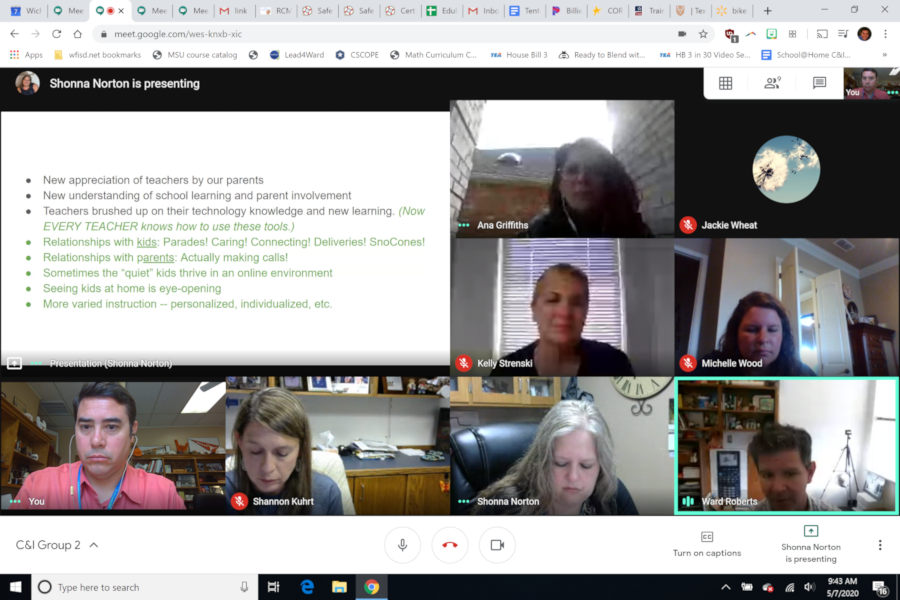Summer Learning: A Dry Run for Fall Back-to-School Planning
One district decided to test those uncharted waters while offering a safe and educational option for summer learning.

Fall means planning for the unplannable for schools. One Wichita, TX district decided to test those uncharted waters while offering a safe and educational option for summer learning.
“In March, we did what we could to bring 14,000 students online,” says Dr. Peter E. Griffiths, Associate Superintendent Wichita Falls ISD. “Systems were in place but we reached a point of if the kid got on, the kid did some kind of work, the kid had some sort of interaction with the teachers — that was going to have to be good enough.”
In a crisis, the bandaid sufficed. But going forward, students deserved more.
“June was our Covid-19 recovery month. Forget conferences, we told staff take this time and read about new things, try things out, purposefully fail so we can see what works and what doesn't,” says Griffiths. “Sometimes there was pushback, a lot of handwringing and ‘there’s no way we can do this’, but we said — This isn’t a choice. We have to figure this out.”
Define the Issues
“We first had to define our options and learning models. We had Synchronous Instruction and Asynchronous Instruction— two very different brands of instruction models, as far as delivery of lessons. When it came to movement on campus, we defined ‘Structured’ as students seated in desks and ‘Unstructured’ as in the halls, restrooms, etc. where masks will be required.”
Here are the definitions of each learning model:
- Face-to-Face: Traditional
- Virtual Instruction: Synchronous (set schedule throughout day)
- Blended Learning: Synchronous (set schedule throughout day)
- Online Instruction: Asynchronous (schedule at students’ discretion)
“There is an anticipation that while the majority of parents want face-to-face, some will choose a typical school day schedule through Virtual Instruction. We believe the next most popular model will be a blended one, where students come in for face-to-face instruction on Monday/Tuesdays, but Wed/Thur/Fri they'll be doing their school work from home online. We think a much smaller group will stay home and do online instruction with a flexible schedule. We have to allow for that, but we don’t have the staff to develop the full lineup of lesson plans. We decided to make use of the Texas Education Agency (TEA) Texas Home Learning programming.”
Tech & Learning Newsletter
Tools and ideas to transform education. Sign up below.
Ages and Stages
To make the most of the Summer Learning, the district honed in on what mattered most at each level of education using input from administration and department heads.
“After much discussion we settled on focusing high school on credit recovery using Odysseyware. They'll be coming to the high school, socially distant,” says Griffiths. “For middle school, we wanted learning that allows touching items, congregations, and discussion. We're very big on tech here, kids need to play with technology, so we figured out how to do that safely. We are doing a three-day STEAM camp. Some will be online with virtual instruction with kits, some face-to-face. (Online became the easier one because we could just develop the lesson plan, send their kit and video lessons, and check in on their progress.) Our district nurse used the spirit of the health guidelines to require temp check, masks, hand sanitizing before joining groups and all tools and surfaces being sanitized before use. Elementary students focused on painting, singing, so we devised Fine Art camps using similar safety protocols.”
It Take a Village to Keep Students Safe
The district then turned to logistics. Bringing in transportation and maintenance departments, maps were drawn, desks were moved, hand sanitation stations and three isolation zones were created (one for temp check or symptom concerns, one nursing station to address and further analysis, a third to safely wait for a parent to pick up ill student). Signage was key to directing traffic and personnel, reminders of social distancing and mask requirements.
“We went with this restrictive environment with the anticipation that it might be less restrictive in the fall. It’s easier to loosen up than tighten up,” says Griffiths. “This three week dry run can highlight issues while we work with a lower number of students. A task force of parents, county health officials, and teachers will observe our program decisions. We'll be doing surveys asking questions like: did you feel safe, were you fearful, were the systems in place clear, did they work well for you? We can take all that data and tweak things to be ready for fall.”
Challenges
“It's all about logistics and systems-- taking the emotion out, following the guidelines, mitigating the cases. How do we keep students and staff safe? Current guidelines dictate the number of students (up to 22 max) by how many can physically fit into a classroom observing the six foot distancing. If only 12-15 students now fit safely, it’s a question of having enough staff. In the secondary world, we're used to a 30 to 1 ratio. We have to consider the facility. If we are used to 30 kids and now can only accommodate 12-22 max, where do those other students go?”
Solutions
“I would recommend taking a good look at your staff. This educator is really good face-to-face. This staff member has a really great ability to maintain organizational skills so they'd work well for blended learning. This educator has green screens, uses tech daily—they are comfortable stepping into virtual learning and facilitating asynchronous instruction. Principals started looking through everyone's certification— a fifth grade teacher certified for first grade might need to move.
Use PD to encourage interaction and familiarity. We took a group of 25 educator “class members” and created 'virtual tables' or mini-meets. We assigned five groups of five to different 'tables' and they would break off to work on a Google slide deck. Then we return to the original Meet after 15-20 minutes to present that work. We mimic what it could look like in a classroom with students.”
Hashtag: Nothing New
“Five years ago there was no way we could pull this off. Certain decisions turned out to be great, such as choosing a Google LSM. We decided to use Google Meet for video conferencing with kids since it plays nicely with Classroom. For us in this time, this approach has become #NothingNew. It's almost funny, now a lot of us are comfortable saying, ‘let me share my screen, let me see your screen, no problem.’ Three months ago, we didn't even know how to talk into a microphone much less do a Google Meet.
“We're open to criticism, but we ask for grace. No matter what we do, we have to be able to turn it on a dime.”
Click here to view a presentation of Wichita’s plans for Summer Learning.
Tech Tools
- Screencastify
- Google...Meets, Docs, Slides, Worksheets, Classroom
- Odysseyware
- Gaggle
- Kajeets
- Chromebooks
- Lego Mindstorms
- Vex Robotics
- Sphero
- Little Bits
- Class Dojo
- Swivl
Related articles:
Cybersecurity Planning for Next Year
How Districts Responded to COVID-19: Remote Learning and Other Benchmarks
Sascha has nearly two decades of experience as a freelance journalist writing for national magazines, including The Washington Post, LA Times, Christian Science Monitor, National Geographic Traveler, and others. She writes about education, travel and culinary topics.

